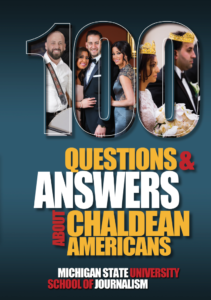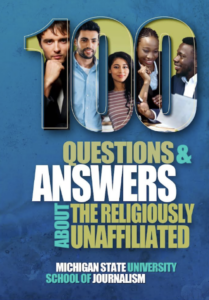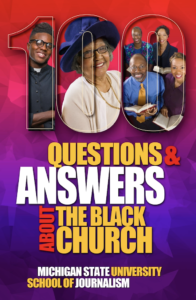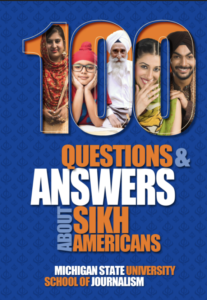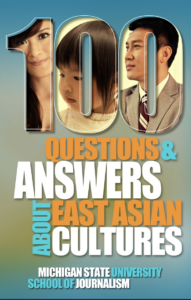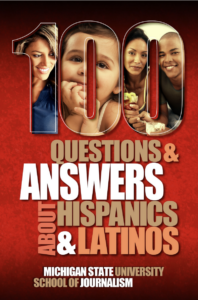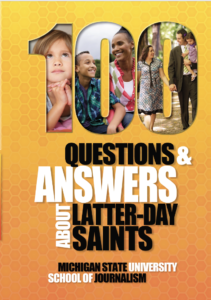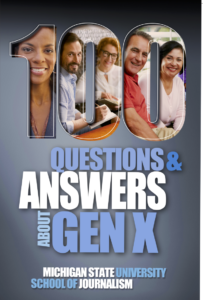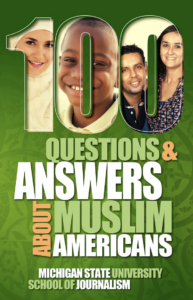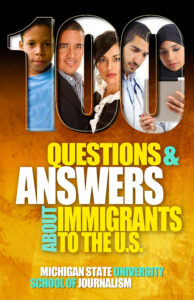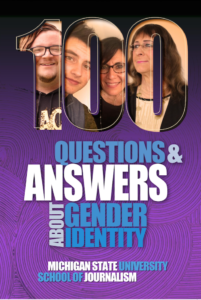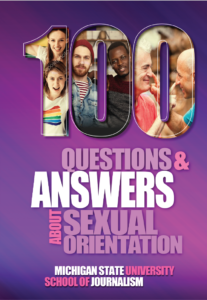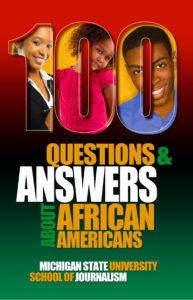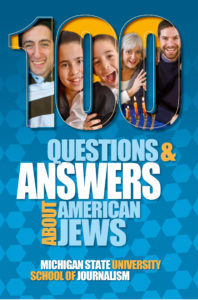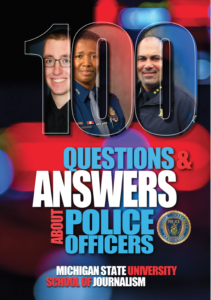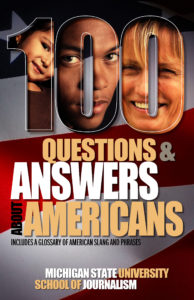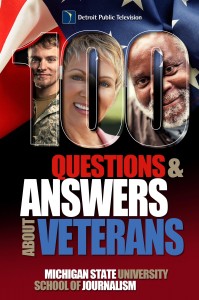This is a sampling from “100 Questions and Answers About Police Officers.” You can get all 100 in either print or digital formats, whichever you prefer.
Agencies can order customized editions of the guide for community outreach. We can add a section with their own message to the front of the guide and the name, logo or shield of the agency to the cover.
Why do people become police officers?
What are the personal rewards of police work?
What are its major challenges?
How dangerous is police work?
What causes police burnout?
How does police work affect families?
How much formal education is required?
What is “suicide by cop?”
What is a typical day for a road officer?
What is an officer’s procedure in a traffic stop?
Do departments have monthly ticket quotas?
How often does racial profiling occur?
What is “excessive force?”
How do police know how much force to use?
How often does use of force by police result in death?
What kinds of less-lethal weapons do police use?
What is the debate about police using military-grade weapons?
Why do people joke about police and donuts?
Why and how do police use body cameras?
What gear do officers carry on their belts?
Why do people become police officers?
The reasons recruits cited in a 2017 study were, in order: helping others, job security, companionship, enforcing the law and fighting crime. The study was by David Lester, chairman of the Department of Criminal Justice at New Jersey’s Stockton State College. He surveyed 128 male recruits in California. This echoed a 2013 study by Maj. Timothy Roufa, chief technology officer with the Florida Highway Patrol. His findings, in order:opportunity to help and to make a difference, work environment, job stability, health and retirement benefits, and salary.Back to top | To order
What are the personal rewards of police work?
Most police officers say their work “nearly always or often makes them feel proud.” Overall, 58 percent reported feeling proud. This was more prevalent among younger officers. This comes from the Pew Research Center’s 2017 report “Behind the Badge: What Police Think About Their Jobs.” About 79 percent said someone in their community had thanked them in the prior month. Forty-two percent said they nearly always or often felt fulfilled doing police work. Most said they felt respected by the public. Back to top | To order
What are its major challenges?
About half the officers in the Pew study said their jobs often or always frustrated them. Reasons can include long hours, time away from family, and criticism from people who they feel do not really understand what they do. About two-thirds said someone in the community had verbally abused them in the preceding month. Nineteen percent said they often felt angry. Another 3 percent said they were nearly always angry. Back to top | To order
How dangerous is police work?
Policing usually shows up around No. 15 on the U.S. Bureau of Labor Statistics’ yearly report of most dangerous jobs. The FBI reported that 66 law enforcement officers died from on-duty injuries from felonious incidents in 2016. Fifty-two others died from accidents, including 26 in car accidents, seven in motorcycle accidents and 12 struck by vehicles. The National Law Enforcement Officers Memorial Fund reported that 21 officers were killed in ambushes in 2015, the highest in more than 20 years. Back to top | To order
What causes police burnout?
Burnout occurs when someone loses the motivation to do their job at a high level. Police face some of the same stressors as others, plus some additional ones. A review of literature showed police stressors included the system, public opinion and incidents of brutality, pain and death. Back to top | To order
How does police work affect families?
Mark Bond, professor of criminal justice at American Military University, has written that police officers can take stress home to their families. Long, disruptive shifts leave the spouse to make decisions alone. There can be cynicism, fear of danger, and a lack of communication can create tension. On the positive side, policing is often steady work that brings good benefits and respect in the community. In many families, officers’ children are inspired to become officers themselves. Back to top | To order
How much formal education is required?
Educational requirements vary by state and department. Normally, applicants need at least a high school diploma or GED to become a police officer. For some positions, a bachelor’s degree is required, and some departments require all officers to have degrees. Especially in administrative positions, some officers earn advanced degrees. Back to top | To order
What is “suicide by cop?”
This is when people act in ways that force a police officer to use lethal force. People do this by behaving in a dangerous or threatening manner. These incidents are extremely dangerous to police, whose lives are put in danger and who do not know the suspect’s intentions. The officers involved can suffer afterward, even if they felt they had no choice. Back to top | To order
What is a typical day for a road officer?
Road officers say there is no such thing as a typical day or a routine stop. There can be risk in any stop or interaction, on any shift, on any day. It can be dangerous to think that any exchange is going to be routine. Every stop has the potential to make the day unusual. Furthermore, circumstances and duties vary from day to day and officer to officer. Generally speaking, patrolling an area requires communication, instincts and quick adjustments based on the numerous situations an officer encounters. It can include patrolling or monitoring traffic and acting as the situation dictates. Road officers can be dispatched to handle or assist with situations that arise. Back to top | To order
What is an officer’s procedure in a traffic stop?
First, the officer uses lights and, if necessary, sound to get the driver to stop where it will be safe for the motorist, officer and traffic. This can be on the shoulder of the road or on a side street or in a parking lot. The officer then tells radio dispatch the location of the stop, the license plate number of the car and the reason for the stop. If it seems necessary, they might request backup. The officer then approaches the driver’s side window, staying behind the driver. The officer looks to see who or what else is in the vehicle. Often, officers introduce themselves and ask motorists if they know the know why they were stopped. The answer can indicate the driver’s awareness and state of mind. Officers ask for the driver’s license, vehicle registration and proof of insurance. Officers return to the patrol car to run checks on the driver and vehicle. On the way, they watch traffic approaching from the rear and keep an eye on the stopped vehicle. Back to top | To order
Do departments have monthly ticket quotas?
In the 2017 Pew report, 3 percent of officers said they are held accountable for a quota of tickets citations, arrests or summonses. Thirty-four percent said they have unofficial quotas. Almost two-thirds said they have no quota. Back to top | To order
How often does racial profiling occur?
Many studies have attempted to answer this. It is clear that people of color are stopped more often than Whites. In some studies, minorities have been several times more likely than Whites to be stopped. It is nearly impossible, however, to determine whether this is a result of racial profiling or other factors. With traffic stops, for example, there may also be non-racial differences in income, where people live, where and when they work or travel, and varying degrees of exposure to police. Some of these circumstances are more related to racial patterns in housing and employment rather than profiling by police, who say it is very difficult to even see who they are pulling over until they approach the car. Back to top | To order
What is “excessive force?”
Let’s start with a distinction. Law enforcement officers can apply force in varying degrees to protect the public. These range from persuasion to firearm use, often called “lethal force.” Standards defining appropriate use depend on the situation. Lethal force is permitted in situations where someone is threatening or taking other people’s lives. So, there is no uniform definition of excessive force. It must be considered in light of whether the circumstances warranted it. The International Association of Chiefs of Police defines force as pressure used to control a situation or compel compliance. Excessive force is using more than is necessary for the situation. Force does not have to be life threatening to be excessive. This can be very hard to measure by someone who was not there. Back to top | To order
How do police know how much force to use?
Officers are trained to match the action to the situation. They must first assess the situation. Some departments have guidelines about which action or equipment the officers can use in different circumstances. The National Institute of Justice suggests this escalating continuum:
· Mere presence
· Talking
· Weaponless tactics such as holds or punches
· Less-lethal force including batons or rubber bullets, chemical spray or stun guns.
· Lethal weapons: guns for situations when there is a serious threat to the officer or someone else.
The idea is that responses can be escalated quickly if necessary. It should be noted that non-lethal force has sometimes been deadly. Back to top | To order
How often does use of force by police result in death?
Washington Post reporter Wesley Lowery asked this question after several highly publicized police killings of civilians in 2014. He found that there were no federal statistics on the total. So, the Post began tracking police shooting deaths of civilians for its Fatal Force project on Jan. 1, 2015. The initiative collects data on such killings from local news reports, social media, law enforcement websites, and police reports. It tracks a dozen pieces of data on each killing. The Post reports that 995 people were killed in 2015. Of that total, 953 were men, 259 were Black and 776 had a deadly weapon. In 2016, 963 were killed. Men were 923 of the victims, 233 were Black and 690 had a gun or knife. About one fourth of the people were found to be mentally ill. In 2017, 987 were killed. Back to top | To order
What kinds of less-lethal weapons do police use?
“Less-lethal” weapons are meant to incapacitate or immobilize. While they are less lethal than guns, they can still kill. Officers are trained to use them and have protocols for deciding when to use them. The National Institute of Justice lists seven types:
· Conducted-energy devices such as stun guns, Tasers and stun belts, which can induce involuntary muscle contractions
· Directed energy devices, with which radiated energy works like blunt force
· Chemicals, including pepper spray, tear gas and stink bombs
· Distractors that incapacitate with bright lights, noise and the laser dazzler
· Vehicle-stopping equipment such as spike strips used to stop cars in high-speed chases
· Barriers including nets, foam and physical barriers
· Blunt force projectiles such as batons and bean bag guns Back to top | To order
What is the debate about police using military-grade weapons?
This debate intensified after protests about the 2014 killing in Ferguson, Missouri, of Michael Brown. Videos showed police using surplus military equipment to quell street demonstrations. Some said the police looked like a paramilitary or occupying force and that this incited violence. In 2015, President Barrack Obama banned the sale of some kinds of military equipment to local law enforcement agencies. In 2017, U.S. Attorney General Jeff Sessions said at an assembly of the Fraternal Order of Police that the government would roll that back. Surplus military equipment programs include non-military vehicles and protective equipment. Departments determine how equipment is used. Back to top | To order
Why do people joke about police and donuts?
Patrol officers, many of whom have 12-hour shifts, stop at donut shops because they are some of the first places to open in the morning and some stay open late. They always have coffee and they are usually on busy streets that need policing. Donut shop owners like having police presence during their odd hours. Some departments have fun with the jokes, organizing community get-togethers over donuts and donut-themed charity runs. When a historic bakery and donut shop in Clare, Michigan, faced closure, all nine members of the local police department stepped in to run it. It is now called Cops and Doughnuts and has added precincts, or locations. A call there brought this explanation: “before the telephone, if people were in trouble or needed an officer they would run to bakeries because they knew the officers would be there to help them.” Not all police officers think donut jokes are funny. Back to top | To order
Why and how do police use body cameras?
Police wear body cams to record evidence and show how they did their work. Police officers tend to wear the camera in the center of their chest to give the greatest view to the people reviewing the video. Pew research showed that the public was more likely than police to think that body cams make people cooperate more and police more often act appropriately. Back to top | To order
What gear do officers carry on their belts?
Items that are commonly carried on a police officer’s belt include: handcuffs, radios baton, hand-held protection devices such as pepper spray, firearms and ammunition, Taser, flashlight, batteries, gloves, pens, pencils, keys and a multitool containing a knife, pliers, a cutter and other tools in one unit. Back to top | To order

